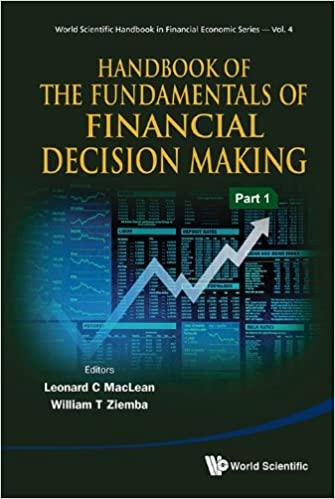Question
12.1 a. What is the preemptive right? b. Why is it important to shareholders? 12.2 Why might an investor-owned firm choose to issue different classes
12.1 a. What is the preemptive right?
b. Why is it important to shareholders?
12.2 Why might an investor-owned firm choose to issue different classes of common stock?
12.3 Describe the primary means by which investor-owned firms raise new equity capital.
12.4 What are the similarities and differences between equity capital in investor-owned firms and fund capital in not-for-profit firms?
12.5 What is the general approach for valuing a share of stock of a dividend-paying company?
12.6 Two investors are evaluating the stock of Beverly Enterprises for possible purchase. They agree on the stocks risk and on expectations about future dividends. However, one investor plans to hold the stock for five years, while the other plans to hold the stock for 20 years. Which of the two investors would be willing to pay more for the stock? Explain your answer.
12.7 Evaluate the following statement: One of the assumptions of the constant growth model is that the required rate of return must be greater than the expected dividend growth rate. Because of this assumption, the constant growth model is of limited use in the real world.
12.8 a. What is the efficient markets hypothesis (EMH)?
b. What are its implications for investors and managers?
12.9 a. What is meant by risk/return trade-off?
b. Does this trade-off hold in all markets?
Step by Step Solution
There are 3 Steps involved in it
Step: 1

Get Instant Access to Expert-Tailored Solutions
See step-by-step solutions with expert insights and AI powered tools for academic success
Step: 2

Step: 3

Ace Your Homework with AI
Get the answers you need in no time with our AI-driven, step-by-step assistance
Get Started


